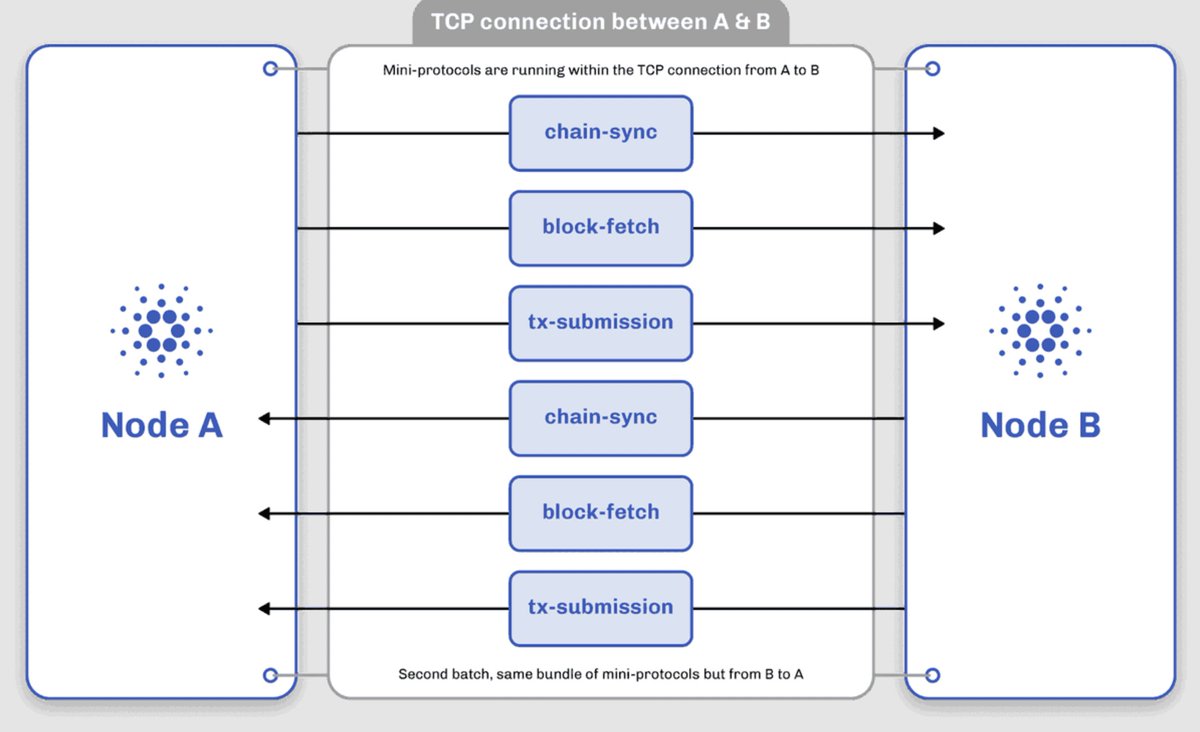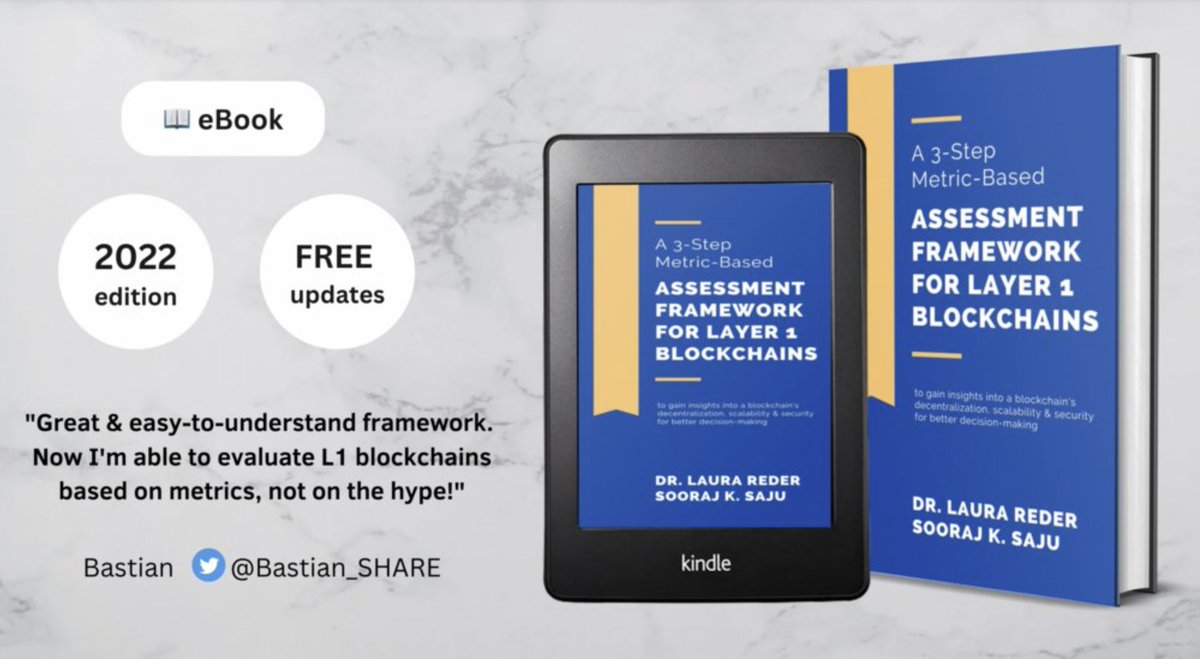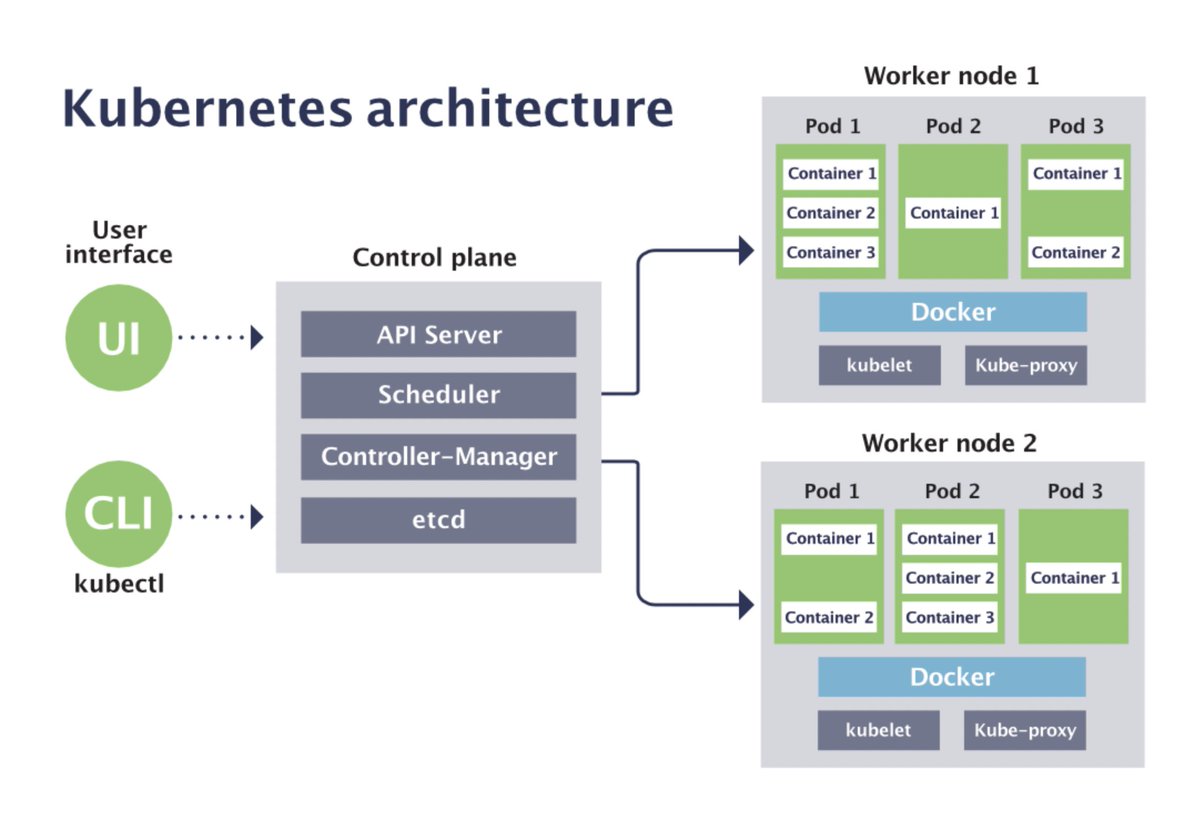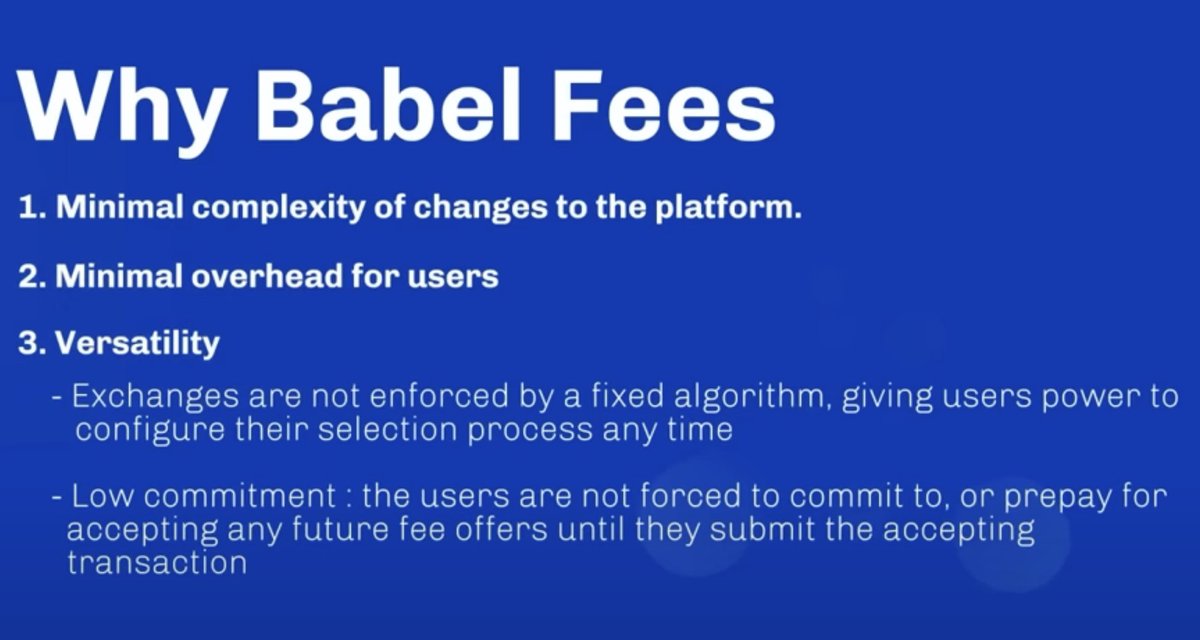
With the release of the new node version 1.35.6.
#Cardano now supports Dynamic peer-to-peer (P2P) networking capability
This update brings a significant boost for the
Resilience & decentralization of #Cardano's networking layer
Why?
Let's dive in🧵👇
#Cardano now supports Dynamic peer-to-peer (P2P) networking capability
This update brings a significant boost for the
Resilience & decentralization of #Cardano's networking layer
Why?
Let's dive in🧵👇

Decentralization is a core value driver for #Cardano
& there are 3 pillars to #Cardano's decentralization
• Networking
• Governance
• Block production
With this upgrade
#Cardano has now achieved complete decentralization of its networking layer
How? let's take a look👇
& there are 3 pillars to #Cardano's decentralization
• Networking
• Governance
• Block production
With this upgrade
#Cardano has now achieved complete decentralization of its networking layer
How? let's take a look👇

So what is a networking layer?
Cardano’s networking layer is a physical infrastructure,
that combines nodes and their interaction into a unified system
The network distributes information about transactions and block creation among all active nodes.
Cardano’s networking layer is a physical infrastructure,
that combines nodes and their interaction into a unified system
The network distributes information about transactions and block creation among all active nodes.
There are two types of nodes
• Core nodes
• & Relay nodes
Core nodes: responsible for producing blocks
Relay nodes: responsible for communicating with other relays in the network & broadcasting blocks
One or more relay nodes must accompany each core node
• Core nodes
• & Relay nodes
Core nodes: responsible for producing blocks
Relay nodes: responsible for communicating with other relays in the network & broadcasting blocks
One or more relay nodes must accompany each core node

A set of mini-protocols enable communication between different nodes
A mini protocol is a defined modular building block of the network protocol
This modular structuring of the network
allows managing the overall complexity of the network design while ensuring flexibility
A mini protocol is a defined modular building block of the network protocol
This modular structuring of the network
allows managing the overall complexity of the network design while ensuring flexibility

Each mini protocol implements a basic information exchange requirement, such as
Sharing blocks as needed
Informing peers of the latest block
A multiplexing layer acts as a central crossing between mini-protocols & the network channel
Sharing blocks as needed
Informing peers of the latest block
A multiplexing layer acts as a central crossing between mini-protocols & the network channel

In this way,
the system validates and adds blocks to the chain and verifies transactions
Thus,
a distributed network of nodes must keep communication delays to a minimum,
and be resilient enough to cope with failures, capacity constraints, or hackers.
the system validates and adds blocks to the chain and verifies transactions
Thus,
a distributed network of nodes must keep communication delays to a minimum,
and be resilient enough to cope with failures, capacity constraints, or hackers.
Cardano's networking layer was undergoing a constant evolution
From its initial federated structure--> which was centralized
↓
The hybrid model--> where nodes communicate via trusted relays or the community-managed tool "topology updater"
↓
The current Dynamic P2P model
From its initial federated structure--> which was centralized
↓
The hybrid model--> where nodes communicate via trusted relays or the community-managed tool "topology updater"
↓
The current Dynamic P2P model
So let's take a look at the Dynamic P2P network
The goal of a Dynamic P2P network is to
Enhance the flow of information between nodes
Remove the network’s reliance on centralized services like topology updater
And enable the further decentralization of the #Cardano network
The goal of a Dynamic P2P network is to
Enhance the flow of information between nodes
Remove the network’s reliance on centralized services like topology updater
And enable the further decentralization of the #Cardano network

Before going further subscribe to our weekly newsletter:
This Week In #Cardano
Your weekly dose of updates on the major events happening in the #Cardano and the broader #Blockchain Ecosystem 💡🤓
Subscribe here👇
thisweekincardanonewsletter.carrd.co
This Week In #Cardano
Your weekly dose of updates on the major events happening in the #Cardano and the broader #Blockchain Ecosystem 💡🤓
Subscribe here👇
thisweekincardanonewsletter.carrd.co
So let's dive into the technical details of the P2P functionality
#Cardano network uses the following components to enable a P2P networking
• Server
• P2P governor
• Connection manager
• Inbound protocol governor
#Cardano network uses the following components to enable a P2P networking
• Server
• P2P governor
• Connection manager
• Inbound protocol governor

Let's take a closer look at these components
1. P2P governor
Based on the relative activity and established connections
the peer nodes of #Cardano network could be classified as
• Hot peers
• Cold peers
• Warm peers
1. P2P governor
Based on the relative activity and established connections
the peer nodes of #Cardano network could be classified as
• Hot peers
• Cold peers
• Warm peers
• Cold peers
These are the existing nodes without an established network connection
• Warm peers
These are the nodes with an established connection
Which is only used for network measurements without implementing any of the node-to-node mini-protocols
These are the existing nodes without an established network connection
• Warm peers
These are the nodes with an established connection
Which is only used for network measurements without implementing any of the node-to-node mini-protocols
• Hot peers
These are the nodes that have a connection,
which is being used by all three node-to-node mini-protocols
The P2P connection should be managed based on the activity and established network connection
To ensure the best system performance of the #Cardano network
These are the nodes that have a connection,
which is being used by all three node-to-node mini-protocols
The P2P connection should be managed based on the activity and established network connection
To ensure the best system performance of the #Cardano network
The P2P governor is responsible for peer connection management
Meaning,
The P2P governor defines
which peers are beneficial for connection purposes,
and which should be promoted or demoted between cold, warm, or hot sets
Meaning,
The P2P governor defines
which peers are beneficial for connection purposes,
and which should be promoted or demoted between cold, warm, or hot sets

Let's take a look at the activities of the P2P governor
▪️Discovering cold peers using random gossip
▪️Promotion of cold peers to warm peers
▪️Demotion of warm peers to cold peers
▪️Promotion of warm peers to hot peers
▪️Demotion of hot peers to warm peers
▪️Discovering cold peers using random gossip
▪️Promotion of cold peers to warm peers
▪️Demotion of warm peers to cold peers
▪️Promotion of warm peers to hot peers
▪️Demotion of hot peers to warm peers
Basically,
The P2P governor maintains the target number of cold, warm, and hot peers
This helps in building and maintaining a connectivity map of the entire network
This simplifies the process of connection between the peer nodes by handling them automatically
The P2P governor maintains the target number of cold, warm, and hot peers
This helps in building and maintaining a connectivity map of the entire network
This simplifies the process of connection between the peer nodes by handling them automatically
Now the second component!
2. Connection manager
The integration of the connection manager with the P2P governor enables bidirectional communication between peers
and also allows for enhanced node-to-node communication without affecting performance
2. Connection manager
The integration of the connection manager with the P2P governor enables bidirectional communication between peers
and also allows for enhanced node-to-node communication without affecting performance

3. Server
The server comprises two primary elements
The accept loop & also the inbound protocol governor
The accept loop allows for incoming connections
The server comprises two primary elements
The accept loop & also the inbound protocol governor
The accept loop allows for incoming connections
4. Inbound protocol governor
The inbound protocol governor is responsible for running and tracking the state of the inbound connection side.
This includes tracking the state of each remote peer (cold, warm, or hot)
and the state of each inbound mini-protocol
The inbound protocol governor is responsible for running and tracking the state of the inbound connection side.
This includes tracking the state of each remote peer (cold, warm, or hot)
and the state of each inbound mini-protocol

So let's take a look at how Dynamic P2P is different from the hybrid model
1. Dynamic P2P streamlines and refines static configurations
This enables SPOs to target dynamic but specific connection numbers (e.g., 20)
from thousands of available relays
1. Dynamic P2P streamlines and refines static configurations
This enables SPOs to target dynamic but specific connection numbers (e.g., 20)
from thousands of available relays
Meaning,
It provides an automatic selection of new connections as existing ones go offline,
eliminating reliance on a static peer pool (as it is with the hybrid model)
and enhancing adaptability
It provides an automatic selection of new connections as existing ones go offline,
eliminating reliance on a static peer pool (as it is with the hybrid model)
and enhancing adaptability
2. P2P enables advanced setups for direct connections between SPOs
Suppose two SPOs want to link their relays, and both have two relays
They can create a peer group including each other's relays,
aiming for at least one active connection.
Suppose two SPOs want to link their relays, and both have two relays
They can create a peer group including each other's relays,
aiming for at least one active connection.
This eliminates the need for excess capacity
And still provides an automatic backup if a relay fails
In contrast,
static configurations (of the hybrid era) forced a choice between limited resilience with one listed relay
or wasted resources with both relays listed
And still provides an automatic backup if a relay fails
In contrast,
static configurations (of the hybrid era) forced a choice between limited resilience with one listed relay
or wasted resources with both relays listed
3. P2P constantly & automatically refines peer selection to reduce overall network diffusion time
Meaning,
The system gauges how often peers first supply block headers that join the blockchain
This helps in identifying & periodically replacing nodes with higher-performing ones
Meaning,
The system gauges how often peers first supply block headers that join the blockchain
This helps in identifying & periodically replacing nodes with higher-performing ones
Basically,
The Dynamic P2P allows for autonomous interconnection of SPO relays
by employing
self-discovery & optimization techniques
Which removes the need for
static configurations & manual SPO maintenance inherent in hybrid setups
The Dynamic P2P allows for autonomous interconnection of SPO relays
by employing
self-discovery & optimization techniques
Which removes the need for
static configurations & manual SPO maintenance inherent in hybrid setups
Which in turn makes the network more performant
and resilient to node or routing failures
enhances the network's overall performance and fortifies its adaptability
in the face of alterations, such as node or routing malfunctions
and resilient to node or routing failures
enhances the network's overall performance and fortifies its adaptability
in the face of alterations, such as node or routing malfunctions
After Dynamic P2P
#Cardano's networking layer will keep evolving
With eventual upgrades like Ouroborus Genesis & Peer sharing
enabling anyone to run a full node like Daedalus
To connect & contribute connect to a fully decentralized & self-organized network
like #Bitcoin
#Cardano's networking layer will keep evolving
With eventual upgrades like Ouroborus Genesis & Peer sharing
enabling anyone to run a full node like Daedalus
To connect & contribute connect to a fully decentralized & self-organized network
like #Bitcoin

Here's a thread that will give you a peek into "Ouroborus Genesis"
an upcoming #Cardano upgrade
That will enable Dynamic participation for validator nodes in a decentralized environment
making #Cardano the first PoS #blockchain with this capability
an upcoming #Cardano upgrade
That will enable Dynamic participation for validator nodes in a decentralized environment
making #Cardano the first PoS #blockchain with this capability
https://twitter.com/842288538238484480/status/1623748877152034818
Tl;DR
Dynamic P2P is a key evolution of #Cardano's networking layer
That
• Automates peer selection
• Removes manual SPO input
• Eliminates static configurations
• Enhances node communication
and
• Boosts Performance, Resilience & Decentralization of #Cardano
Dynamic P2P is a key evolution of #Cardano's networking layer
That
• Automates peer selection
• Removes manual SPO input
• Eliminates static configurations
• Enhances node communication
and
• Boosts Performance, Resilience & Decentralization of #Cardano
Considering a career in the #blockchain sector?
Explore the Job Board by @cardano_jobs
Discover:
▪️engaging roles within the #CardanoCommunity
▪️unique job openings from leading Cardano ecosystem projects
👇
jobs.cardanojobs.io
Explore the Job Board by @cardano_jobs
Discover:
▪️engaging roles within the #CardanoCommunity
▪️unique job openings from leading Cardano ecosystem projects
👇
jobs.cardanojobs.io
Btw
@RareEvo is happening Aug 24th-26th in Denver, Colorado
Its the largest #Cardano event, where you can learn & network
So, grab your tickets starting February 12th
You can use the code "Sooraj" to get a 10% discount
But on top of that you will also receive a book for free
@RareEvo is happening Aug 24th-26th in Denver, Colorado
Its the largest #Cardano event, where you can learn & network
So, grab your tickets starting February 12th
You can use the code "Sooraj" to get a 10% discount
But on top of that you will also receive a book for free

The first 50 to use code "Sooraj" will also receive a free copy of
"A 3-Step Metrics-Based Assessment Framework for Layer1 Blockchains"
It's packed with easy-2-understand assessment frameworks & examples
So you can discover the actual value of an L1
amazon.de/3-Step-Metric-…
"A 3-Step Metrics-Based Assessment Framework for Layer1 Blockchains"
It's packed with easy-2-understand assessment frameworks & examples
So you can discover the actual value of an L1
amazon.de/3-Step-Metric-…

• • •
Missing some Tweet in this thread? You can try to
force a refresh













